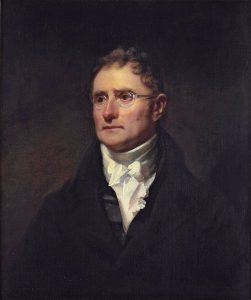We return to the birthday boy, Ludwig/Louis/Luigi van Beethoven, who turns 250 years-young this very year of 2020. As promised/threatened back in mid-2019, every month or two through 2020 I will dedicate a Dr. Bob Prescribes post to one or another of Beethoven’s lesser-known works or lesser-known recordings. On July 23, 2019 it was Beethoven’s Mass in C; on August 27, 2019 it was Beethoven’s Piano Quartet No. 3 in C Major, WoO 36 (a work composed when he was 14); on October 15, it was Emil Gilels’ superb recording of Beethoven’s Piano Concerto No. 4. Dr. Bob Prescribes for December 31 was a lengthy post on Beethoven’s songs, which are entirely under-appreciated and underperformed. Just so, today’s post will be the second of a projected three dealing with Beethoven’s songs; that third post, which will appear most definitely whenever (vague enough for you?) will focus on Beethoven’s vocal masterwork, Liederkreis an die ferne Geliebte (“Song-circle To the Distant Beloved”), Op. 98 of 1816.
For today we turn to a body of Beethoven’s work – a very large body of Beethoven’s work – that remains almost unknown: his folk song arrangements. Between 1809 and 1818 Beethoven arranged 179 Scottish, Irish, Welsh and various other European folk songs for one (or more) voices, piano, violin and cello. 168 of these arrangements were made at the behest of an Edinburgh-based folk song devotee named George Thomson. And therein lies a fascinating story.

George Thomson (1757-1851) was a native of Scotland – born at Limekilns, Fife – and an amateur musician. He held down his day gig for 59 years: as a clerk of the “Board of Trustees for the Encouragement of Literature and Manufactures” in Edinburgh. But it wasn’t his profession as a clerk that tickled Thomson’s fancy, rang his chimes, and rubbed his rhubarb. Rather, it was his hobby, which he approached with the zeal of a Biblical prophet. That hobby was the folk music of Scotland, and later, the entire British Isles.
It was around 1790 that the 33 (or so) year-old Thomson got it into his head that while the music of his beloved Scottish folk songs represented an artist treasure of the greatest value, the actual words of the songs sucked. (Colloquial put but nevertheless accurate. In the words of one modern writer, when it came to these folksongs, “Thomson displayed considerably more zeal than knowledge in his treatment of the material.”)
Thomson expressed his dissatisfaction with the pre-existing words of many Scottish folk songs in a letter to the great Scottish poet Robert Burns (1759-1796), who he asked to supply new words for these Scottish melodies:
“For some years past, I have employed many leisure hours in collating and collecting the most favourite of our national melodies, for publication. [I am] desirous to have the poetry improved wherever it seems unworthy of the music. Some charming melodies are united to mere nonsense and doggerel, while others are accommodated with rhymes so loose and indelicate as cannot be sung in decent company. To remove this reproach would be an easy task [for you]. We shall esteem your poetical assistance a particular favour, besides paying any reasonable price you shall please to demand for it.”

Burns happily agreed to provide his “poetical assistance”, although patriot artiste that he was, the thought of obtaining filthy lucre for such work was particularly offensive to him. Burns replied to Thomson:
“In the honest enthusiasm with which I embark in your undertaking, to talk of money, wages, fee, hire, etc. could be downright Sodomy of Soul! A proof [copy] of each of the Songs that I compose or amend, I shall receive as a favour.”
In June of 1793, Thomson issued his first publication: a collection titled Select Scottish Airs that contained 25 traditional Scottish melodies fitted out with new words by Burns.
The first composer Thomson acquired for what would become his “stable” of professional composers was Ignaz Pleyel, whose music was as popular and highly respected at the time as it is unknown and belittled today.
Thomson then hired Leopold Anton Kozeluch (whose present reputation stands no higher than Pleyel’s), and finally hit pay dirt when Joseph Haydn consented to participate in the project around 1800. In fact, by the time Thomson hired him, Haydn was getting old and tired and slow, and soon enough Thomson set his sights on Beethoven… Continue reading, and see Dr. Bob’s Prescribed Recording, only on Patreon!
Robert Greenberg Courses On Sale Now
-
 Great Music of the 20th Century$199.95 – $319.95
Great Music of the 20th Century$199.95 – $319.95 -
 The Chamber Music of Mozart$199.95 – $319.95
The Chamber Music of Mozart$199.95 – $319.95 -
 The String Quartets of Beethoven$199.95 – $319.95
The String Quartets of Beethoven$199.95 – $319.95 -
 Beethoven’s Piano Sonatas$129.95 – $214.95
Beethoven’s Piano Sonatas$129.95 – $214.95 -
 How to Listen to and Understand Opera$89.95 – $169.95
How to Listen to and Understand Opera$89.95 – $169.95 -
 Great Masters: Haydn — His Life and Music$89.95 – $169.95
Great Masters: Haydn — His Life and Music$89.95 – $169.95 -
 Great Masters: Mozart — His Life and Music$89.95 – $169.95
Great Masters: Mozart — His Life and Music$89.95 – $169.95 -
 Great Masters: Tchaikovsky — His Life and Music$89.95 – $169.95
Great Masters: Tchaikovsky — His Life and Music$89.95 – $169.95 -
 Great Masters: Beethoven — His Life and Music$89.95 – $169.95
Great Masters: Beethoven — His Life and Music$89.95 – $169.95 -
 Great Masters: Mahler — His Life and Music$89.95 – $169.95
Great Masters: Mahler — His Life and Music$89.95 – $169.95 -
 Great Masters: Brahms — His Life and Music$89.95 – $169.95
Great Masters: Brahms — His Life and Music$89.95 – $169.95 -
 Great Masters: Liszt — His Life and Music$89.95 – $169.95
Great Masters: Liszt — His Life and Music$89.95 – $169.95
